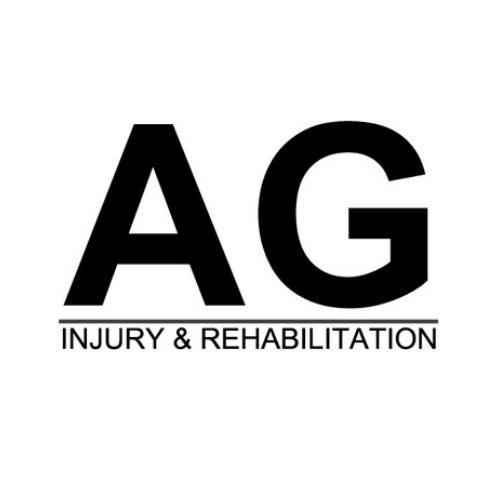Every stride a runner takes generates force equivalent to three times their body weight on their knee joints. Yet, contrary to popular belief, running doesn't inherently damage your knees - in fact, research suggests it can strengthen them when done correctly.
However, knee joint pain remains one of the most common complaints among runners, affecting up to 25% of active runners at any given time. Understanding the delicate balance between pushing your limits and protecting your joints becomes crucial for maintaining a sustainable running practice.
The Reality of Knee Joint Pain for Runners
Running brings many health benefits, but knee pain remains a frequent challenge for athletes at all levels. Runner's knee, also known as patellofemoral pain syndrome, stands out as one of the most common running-related injuries that can sideline athletes from their training routines.
The pain patterns vary among runners - some experience a dull ache around the kneecap, while others feel sharp twinges that intensify during activity. These symptoms often appear when runners make sudden changes to their training schedule or return to running after taking time off.
Many factors contribute to knee joint discomfort in runners. Patellofemoral pain syndrome and patellar tendonitis top the list of typical diagnoses. The stress of repetitive impact, combined with worn-out shoes or poor running mechanics, can lead to increased pressure on the knee joints. Muscle imbalances, particularly in the thighs, may cause the kneecap to track incorrectly during movement.
For most runners, knee pain signals the need to adjust training habits. Quick increases in mileage or intensity often trigger symptoms, making it essential to build up running volume gradually. Proper equipment, especially well-fitted running shoes, plays a key role in supporting healthy knee function and preventing injury.
Common Causes of Knee Joint Pain in Runners
Patellofemoral pain syndrome occurs when the kneecap doesn't track properly along its groove in the thighbone. This condition often creates a dull ache around or behind the kneecap that worsens when running uphill or climbing stairs.
The iliotibial (IT) band, a thick strip of tissue running from hip to knee, can become irritated from overuse. When inflamed, it causes sharp pain on the outer side of the knee, making each stride uncomfortable. This issue frequently appears in runners who train on uneven surfaces or run the same direction on curved tracks.
Repetitive stress from running creates microscopic damage in knee tissues. Without proper rest between workouts, this stress builds up and leads to overuse injuries like patellar tendonitis, which causes pain just below the kneecap.
Poor running form puts extra strain on knee joints. Common form issues include landing too hard, overstriding, or running with feet pointed outward. These patterns often stem from weak hip muscles or tight calf muscles.
Muscle imbalances, particularly between quadriceps and hamstrings, affect how the kneecap moves during running. Strong quads paired with weak hamstrings pull the kneecap upward, creating pressure in the joint. This imbalance often leads to tracking problems and pain over time.
Immediate Strategies for Managing Knee Pain
When knee pain strikes during or after running, the RICE method provides relief. Start with Rest - stop running and avoid activities that cause discomfort. Apply Ice to the affected area for 15-20 minutes several times daily to reduce swelling. Use Compression with an elastic bandage to minimize inflammation, but avoid wrapping too tightly. Finally, Elevate the leg above heart level when resting or sleeping.
Taking a short break from running helps prevent additional strain on the knee joint. Switch to low-impact activities like swimming or cycling to maintain fitness while allowing the knee to recover. When pain occurs, reduce running distance and frequency until symptoms improve.
Over-the-counter anti-inflammatory medications can help manage pain and swelling in the short term. However, these medications shouldn't become a long-term solution for continuing to run through pain.
The key to recovery lies in listening to your body. If knee pain persists during a run, slow down or walk. Sharp or severe pain signals the need to stop completely. A few days of modified activity often prevents minor discomfort from becoming a serious injury that requires weeks of recovery time.
Long-term Solutions for Knee Pain Management
A proper warm-up primes your muscles and joints for running. Start with 5-10 minutes of walking, followed by light jogging and running-specific movements. After each run, cool down with gentle stretches to maintain flexibility and reduce muscle tension.
Building strength in key muscle groups protects your knees during runs. Focus on exercises that target quadriceps, hamstrings, and hip muscles. Simple bodyweight moves like squats, lunges, and bridges create a solid foundation. Add resistance bands or weights as your strength improves.
Mix up your training routine with low-impact activities. Swimming, cycling, and elliptical workouts maintain cardiovascular fitness while giving your knees a break from constant impact. These activities also strengthen different muscle groups, creating better overall balance and stability.
Building mileage too quickly sets you up for injury. Follow the 10% rule - increase your weekly distance by no more than 10%. This steady progression allows your body to adapt to increased training loads. Space out hard workouts with easy runs or rest days to prevent overload on your knee joints.
Daily stretching improves joint mobility and muscle flexibility. Target your calves, quads, hamstrings, and hip flexors. Hold each stretch for 30 seconds, avoiding bouncing movements. Regular stretching reduces muscle tension that can pull your knees out of alignment during runs.
Biomechanical Adjustments
Good running mechanics start from the ground up. Proper foot strike patterns reduce stress on knee joints - aim to land midfoot rather than on your heels or toes. Keep your shoulders relaxed, arms at 90 degrees, and maintain a slight forward lean from the ankles.
Your shoes play a major role in knee health. Replace running shoes every 400-500 miles, as worn cushioning increases joint stress. Look for models that match your foot type and running style. Runners with flat feet need more stability features, while those with high arches benefit from extra cushioning.
Running stores can perform gait analysis to identify form issues that strain your knees. Common problems include excessive hip drop, knee rotation, or feet rolling inward (overpronation). These movement patterns often stem from muscle weakness or joint instability.
Custom orthotics or over-the-counter insoles help correct alignment problems that affect knee function. Insoles designed for your specific foot type can reduce overpronation and provide better shock absorption. However, give your feet time to adjust to new insoles by wearing them for short periods initially.
Monitor your cadence (steps per minute) while running. A faster turnover rate of 170-180 steps per minute reduces impact forces on your knees. Take shorter, lighter steps rather than long, heavy strides that create jarring impacts.
Physical Therapy and Professional Interventions
Physical therapists create personalized exercise plans targeting specific muscle groups that support knee function. These programs often start with basic movements like straight leg raises and wall sits, then progress to more complex exercises as strength builds. Therapists also teach proper stretching techniques for tight muscles that pull on the knee joint.
Manual therapy helps break up scar tissue and reduce joint stiffness. Techniques include soft tissue massage, joint mobilization, and targeted pressure point release. These hands-on treatments improve knee mobility and reduce pain during running activities.
Video analysis of running patterns lets therapists spot movement issues that stress knee joints. Common problems include foot placement, knee alignment, and hip stability during the running cycle. Therapists use this information to recommend form adjustments and specific exercises.
Treatment plans often include at-home exercises using resistance bands, foam rollers, and stability balls. These tools help runners maintain strength and flexibility between therapy sessions. Regular practice of prescribed exercises speeds recovery and prevents future knee problems.
Many physical therapists work with runners to modify training schedules around recovery. They suggest alternative workouts that maintain fitness while allowing injured tissues to heal. This balanced approach helps runners return to their regular running routine safely and effectively.
Preventive Measures for Running-Related Knee Pain
Regular strength training forms the foundation of knee injury prevention. Focus on exercises that target the muscles supporting your knees - squats, lunges, and leg presses build strength in your quadriceps and hamstrings. Add calf raises and hip abductor exercises to create balanced leg strength.
Body weight management directly affects knee health. Each pound of extra weight adds four pounds of pressure to your knee joints during running. Maintain a healthy weight through balanced nutrition and consistent exercise to reduce stress on your knees.
Proper nutrition supports joint health and muscle recovery. Include protein-rich foods to repair muscle tissue after runs. Foods high in omega-3 fatty acids and antioxidants help reduce inflammation. Stay hydrated before, during, and after runs - dehydrated muscles and joints become more susceptible to injury.
Rest periods between runs allow your body to repair and strengthen. Schedule at least one full rest day between hard workouts. Listen to early warning signs like mild soreness or stiffness - these often signal the need for additional recovery time. Consider taking regular "down weeks" with reduced mileage every 4-6 weeks to prevent overtraining.
Cross-training on rest days maintains fitness while giving your knees a break. Activities like swimming or cycling keep your cardiovascular system strong without the impact of running. This varied approach reduces the repetitive stress that often leads to knee problems.
When to Seek Medical Attention for Persistent Knee Pain
While some knee discomfort responds well to self-care methods, certain symptoms signal the need for professional medical evaluation. If knee pain lasts longer than two weeks despite rest and home treatment, schedule an appointment with a healthcare provider.
See a doctor immediately if you notice significant swelling around the knee joint, especially when accompanied by warmth or redness. These signs might indicate inflammation requiring medical intervention. Sharp, severe pain that makes weight-bearing difficult needs prompt attention to rule out serious injury.
Watch for mechanical symptoms like catching, locking, or giving way of the knee during activity. These issues often point to structural problems that won't improve without proper treatment. Any noticeable changes in knee appearance or alignment warrant professional assessment.
Physical limitations that affect daily activities deserve medical attention. If you can't fully bend or straighten your knee, or if pain disrupts your sleep, consult a healthcare provider. Similarly, pain that forces you to alter your running form puts other joints at risk of compensatory injury.
Early intervention often leads to better outcomes and faster return to running. A sports medicine physician or orthopedic specialist can perform specific tests to identify the root cause of knee pain. They may recommend imaging studies like X-rays or MRI to guide treatment decisions and rule out serious conditions.
The Path Forward: Making Peace with Your Knees
Running doesn't have to be a constant battle with knee pain. By implementing proper training techniques, maintaining good form, and listening to your body's signals, you can build a sustainable running practice that supports long-term joint health. The key lies in finding the right balance between challenge and recovery.
Remember that every runner's journey is unique, and what works for others may not work for you. Don't hesitate to seek professional guidance when needed, and always prioritize joint health over short-term performance gains. With patience and proper care, you can continue enjoying the benefits of running while keeping your knees healthy and strong.

